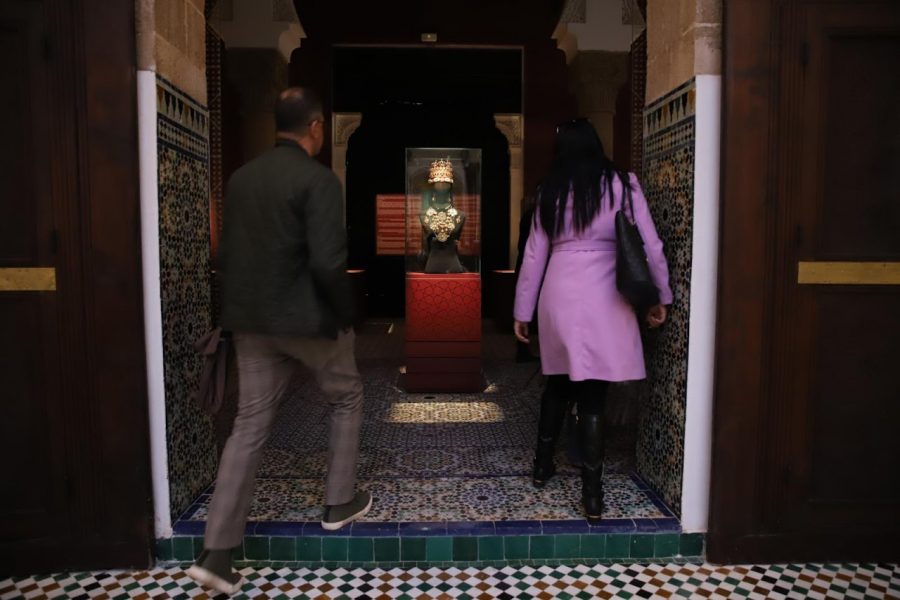The world’s oldest piece of jewelry is the Bizmoun necklace.
It can be seen in Rabat, Morocco, at the National Finery Museum, which recently reopened after extensive renovations.
The 32 perforated shells that make up the necklace were discovered in 2019 in the Bizmoun cave close to Essaouira.
“The Bizmoun necklace, which dates back 150,000 years and is the oldest piece of jewelry in the world—not just in Morocco—is the oldest object on display here. In the Bizmoun cave near Essaouira, it was found during recent excavations. It allows us to begin our investigation and learn more about the evolution of historical jewelry, according to Fatima Zahra Khlifi, curator of the National Finery Museum.
The museum is significant historically, culturally, and artistically.
It was a princely residence in the 17th century before holding exhibitions.
Since 1915, the structure has served as a museum; up until 2006, it was known as the Oudaya Museum.
Early in 2020, the renovation work began, and it was completed in late 2022.
The structure was opened in early January and is now known as the National Finery Museum.
King Mohammed VI of Morocco donated 350 items from his collection to the museum after it opened.
“The objective of the restoration and rehabilitation of the building was to comply with all necessary requirements for the approval of the museum exhibits and to receive offers, both at the national and international levels, while respecting the building’s characteristics.
Then, there were workshops where the contents were chosen, inventoried, and maintained to enhance these exhibitions, not to mention the gift that King Mohamed VI provided for us, says Zahra Khlifi.
The museum has 8,000 items total on display, including jewelry, costumes, bags, belts, and shoes.
The museum’s global concept includes a variety of jewelry, and it does not just feature ornamental jewelry; it also features clothing, men’s jewelry, in a varied exhibition divided into five parts through which we can learn about the history of jewelry, the development of jewelry-making tools, the history of Moroccan costumes and the key locations where they were made, as well as men’s and women’s urban and casual attire.
More than 11,000 people visit the museum every day since it reopened.
“I can see that the location is really showcasing Moroccan artwork, particularly metalwork and caftans. People who are interested in learning more about Moroccan culture should go there, according to visitor Hassan Belfakir.
Residents of Rabat are proud of their city and have taken notice of the renovations.
Abdelfattah El Aoufir, a visitor, remarks that “this museum has made a great addition to the city of Rabat and has changed a lot.”
The National Finery Museum will contribute to preserving Moroccan cultural heritage, claims historian Mohamed Es-Semmar.
The added value that museums offer is that it complements what the Moroccan people as a whole and what the city of Rabat does, for example, in terms of its museums, he claims. “We cannot comprehend the tangible heritage without incorporating the intangible heritage that is displayed in museums,” he says.
Additionally, it “gives the cultural tourist a general idea of daily life in those earlier centuries.”








